The Thomas-Rice Auditorium
(As It Appears Today)

Thomas-Rice Auditorium - Opened 1936. The building that is commonly known today as the "Rice Auditorium" is more formally named the "Thomas-Rice Auditorium," in honor of two men: Robert W. Thomas and G. Herbert Rice. Both Thomas and Rice were members of the Spring Grove State Hospital Board of Managers at the time the auditorium was built; and, not unlike Arthur D. Foster, after whom the Foster-Wade Building is named, Mr. Rice served as the Board's Secretary-Treasurer. 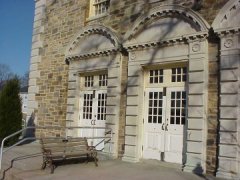 The following description of the of the then brand new Thomas-Rice Auditorium appeared in a publication written in the year that it opened:
The following description of the of the then brand new Thomas-Rice Auditorium appeared in a publication written in the year that it opened:
"The new auditorium building is now finished; it contains two floors. The upper one will be used as an amusement and lecture hall, with a seating of 750. The floor space [is] sixty by one hundred and four feet and [is] four times as large as the one now in use.* The lower floor will be used for an occupational therapy department, and will afford much more space than the old one." (The Beacon, 1936)
An Annual Report, written several years before the building was completed, references a plan to use it for performances by an "orchestra of the musically inclined patients." However, evidently the referenced orchestra wasn't actually organized until 1938. (See Orchestra.) The auditorium's two original carbon-arc movie projectors and sound system are still located in its projection room above the balcony.For many years feature films were shown in the auditorium twice a week -- on Wednesdays and Sundays. Dances were held there every Friday. While the upper floor of the building remains in regular use for the purpose for which it was originally intended, i.e. as "an amusement and lecture hall," the lower floor was converted a number of years ago into chapels and office space for the hospital's Pastoral Services program. Today the building has two pipe organs -- one on each floor. However, it should be noted that neither of these musical instruments was original to the building. The circa 1927 Wurlitzer-style theatre organ that is currently located in the auditorium section was installed in the building by the Free State Theatre Organ Society in the early 1990s.It is used on a regular basis for organ concerts and special screenings of silent movies. The second pipe organ, which is located in lower section of the building, was installed for use during religious services in the main chapel.
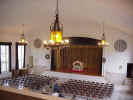
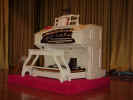
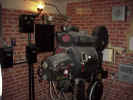
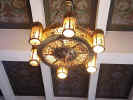
Click on the Thumbnail to View the Larger Image.
* The completion of the Thomas-Rice Auditorium in 1936 allowed the hospital to convert the Main Building's Amusement Hall and the Occupational Therapy Department, also located in the Main Building, into additional patient wards and a new dining room. This conversion created space for an additional 90 patients in the overcrowded Main Building.

